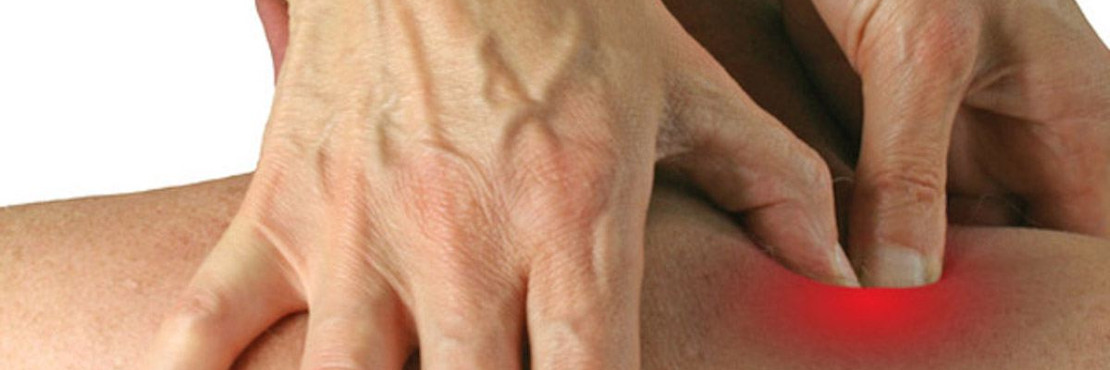
Trigger Point
Trigger points are sensitive spots found in skeletal muscle. These nodules or "knots" are often manipulated with remedial massage techniques in order to treat musculoskeletal disorders and improve health outcomes. Rubbing and pressing these sensitive points creates a specific feeling which can be interpreted differently by each client. For some clients the feeling is amazing and enjoyable for others it may range from irritating through to extremely painful, regardless this therapy is associated with increased mobilisation and long-term pain relief. While the science surrounding trigger points is still young, studies have emerged to help identify these spots, recognise how they develop, and understand why they're such a powerful tool in the context of physical therapy.
What are trigger points?
Trigger points are highly specific spots found in tight muscle fascia, and are often experienced as the focal point of pain. Also known as myofascial trigger points, these spots are known to cause discomfort, odd sensations, numbness, and various pain responses. Activities that cause direct compression or muscle contraction can affect these points and cause an acute reaction.
Trigger point therapy causes a local twitch response, which is a brisk contraction of skeletal muscle fibres. This response is an important part of the process, acting as a clinically valuable objective sign to confirm the presence of a myofascial trigger point.
The initial contraction or "jump" in the muscle is typically followed by local tenderness, pain that radiates from the trigger location, and possibly referred pain around the body. While these points are a common source of physical pain, they also provide an opportunity for physical therapists who are ready to locate and release tension by engaging directly with the physical body.
How do trigger points develop and recur?
The science surrounding trigger points and trigger point therapy is somewhat controversial but developing all the time. According to a study from the University of Michigan Medical School, trigger points may develop as the result of acute trauma or repetitive microtrauma on muscle fibres. Trigger points form when stress exists in discrete physical locations, either acutely or over an extended period of time. When these points have developed, they're more likely to accumulate unwanted tissues.
Because these points can form anywhere on the body, they're likely to manifest in a range of ways. From tension headache and tinnitus through to joint issues and lower back pain, the symptoms themselves are often the tip of the iceberg. Somewhat paradoxically, their focal nature can also lead to a range of radiated and associated symptoms, with a specific trigger point known to elicit pain over a large area.
While a local twitch response may be felt acutely, patients may also experience chronic symptoms such as referred pain and decreased motion. Trigger points are classified as either active or latent, with latent symptoms likely to recur when the original trauma is repeated, or lifestyle stresses are continued. It's important to differentiate between radiating pain and referred pain, with the former emerging from the trigger point, and the latter separate or adjacent to the trigger point.
What makes trigger points such a valuable tool?
Trigger points are a valuable treatment option for physical therapists, and a useful tool in the context of remedial massage. The focal nature of triggers may define the pain response, but it also provides a unique opportunity for healing. Trigger point therapy involves rubbing, pressing, and other acute movements directly on and around the points in order to reduce muscle stress and promote a return to healthy movement patterns.
Trigger point manipulations can be useful in many physical therapy programs. The nodules of muscle fibre that define these points are generally much harder than normal consistency, with massage therapists able to feel the points directly and use feedback techniques based on the pain response and local twitch response. Rather than simply treating the extended symptoms of muscle stress and injury, trigger points allow the therapist to get to the root of the problem in a way that is fast and effective.


